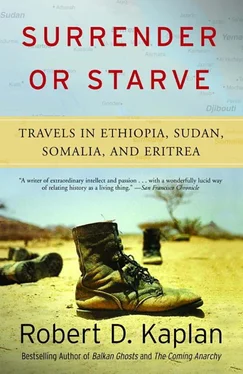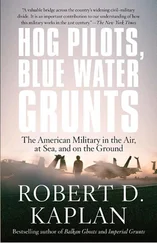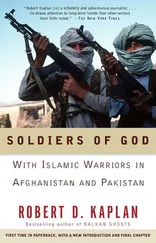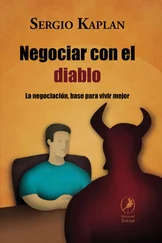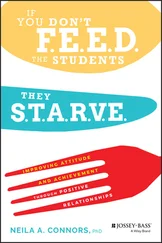Emergency Palace was the sobriquet given to the Acropole by senior Associated Press correspondent Mort Rosenbloom. Some compared the hotel to Rick’s American Café in the movie Casablanca . The dining room, usually jam-packed with journalists and relief workers, was decorated with Greek island watercolors and serviced by scowling, turbaned waiters who shuffled around among the tables. The only thing the Acropole lacked was liquor, a sacrifice necessitated by Islamic law. Nevertheless, the conversations that took place over the curried rice, Nile perch, and freshly squeezed lemon juice prepared by “Mummie,” the matriarch of the Pagoulatos clan, had a delirious, intoxicated quality—an effect of the heat no doubt. Because many of the journalists and relief workers in Sudan also had worked in Ethiopia, the entire history of the famine was recorded in the Acropole dining room. When I last arrived at the Acropole in the autumn of 1986, there was only one topic of conversation—the south.
The famine relief story in the Horn of Africa in the mid 1980s had three parts to it. Acts One and Two were northern Ethiopia and western Sudan. Act Three, which in this case was the denouement of the drama, was the south of Sudan. As in Shakespearian and Greek tragedy, it was the part of the play when the protagonists—the journalists and relief workers—attained full awareness. The problem was that by the time they did so, the public was barely paying attention. The theater had emptied out before the final scene.
With one million square miles of territory, Sudan always was more like a vast subcontinent than an individual country, and of all its remote regions—western Darfur included—none seemed as remote as the jungles and savannas of the equatorial south. Even by African standards, the south was in the middle of nowhere, cut off from the rest of Sudan by the Sudd, the world’s most formidable swamp, and bordering such dangerous, disease-ridden, and underdeveloped places as the Central African Republic, Zaire, war-racked northern Uganda, and Kenya’s Turkana desert. A netherworld of violence and chaos, roamed by armed bandits and disaffected Ugandan soldiers, the south was a heartland of unreported atrocities as well as a breeding ground of leprosy, elephantiasis, and Green Monkey disease. Just the lost and vacant ring of the towns in the region (Yey, Tarakaka, Pibor Post) evoked distant planets and gave one the feeling that the south really was in deep space. It had no roads to speak of, and because of the civil war, planes flying into the region always were shot at and occasionally were shot down. On every trip to the south, Western relief workers literally took their lives in their hands. When I asked a U.S. diplomat how to get to a certain area of the south near the Ethiopian border, he gave me a mad look and said, “Parachute, I guess.” Admitted an official of Sudan’s Ministry of Information, “Nobody ever really knows what’s happening down there.”
Southern Sudan never had a chance. In the nineteenth century, Mohammed Ali and later Egyptian khedives gradually annexed the area to their Sudan holdings in a crazed attempt to control the headwaters of the Nile and expand their empire. The British, employing their usual divide-and-rule tactics—but also motivated by an instinctive realization that for the non-Moslem, African south to “work” it would have to be separated from the Arab north—did everything in their power to keep the south free of northern influence. Tribal consciousness was promoted. Arabs were excluded from the area, and Greeks and Armenians were brought in instead to run the shops. To encourage Christianity, the Verona fathers, an Italian Catholic order, were allowed in to proselytize. The cleavage soon became too deep to correct. As Michael C. Hudson indicated in Arab Politics: The Search for Legitimacy, of all the minorities in the Middle East, the black Africans of Sudan always have been the least assimilated, less so than even the Jews in Arab countries, who, unlike the African southerners, spoke Arabic and were racially similar to the Arabs.
The Moslem Arabs in the north and the pagan and Christian Africans in the south were entirely in different orbits. Khartoum’s Arab politicians wanted to own and exploit the south without having to do anything for it—they didn’t even want to think about it. “To the Arabs, the southerners are just a bunch of spear-chucking heathens,” said a Western official. When it dawned on the Arabs that the oil and hydroelectric resources of the region might never be utilized due to the civil war, voices were raised, beginning in late 1986, about it not being such a bad idea if the south were to formally split away. If Sudan had “less of a government than any other country on the continent,” as the chief of United Nations Emergency Operations in Khartoum, Winston Prattley, told me, then southern Sudan had even less than that.
Neither the northern Arabs nor the southern Africans had any respect for the humanity of the other. So when years of fighting between the Khartoum government and the south’s SPLA ignited a famine, neither side could comprehend why the khawaja s were kicking up such a fuss.
Journalists and aid workers knew less about the south than about anywhere else in famine-stricken Africa. The south was less safe, less accessible, and involved greater physical hardships than was the case in northern Ethiopia. Even those who managed to penetrate the area only were able to see an outpost or two. The going aid agency figure of those affected by famine was two million, but nobody really had any idea. Anthony Suau, a Pulitzer Prize–winning photographer on assignment for National Geographic, told me he had a feeling that the whole southern famine might be a hoax insofar as only tens of thousands might be threatened instead of millions. Still, while knowing and seeing less, by 1986 journalists and aid workers had learned a lot about famine in Africa, and consequently they had a more accurate insight into the realities of southern Sudan and other hunger-hit regions than they had about Ethiopia in 1984 and early 1985.
“War, Not Drought, Cited as Key Threat to Africa” was the headline in the March 28, 1986, International Herald Tribune for Washington Post correspondent Blaine Harden’s dispatch. “It is no longer drought but rather war that has become the major factor in a continuing famine,” wrote Harden in the lead paragraph. Another Tribune headline, on July 1, 1986, read: “War in Southern Sudan Heightens Food Crisis, Hampers Relief Effort.” Underneath, Washington Post correspondent Jonathan C. Randal wrote: “The increasingly violent ‘hidden war’ in southern Sudan… has unleashed rival armies, marauding militias and bandit gangs and displaced hundreds of thousands of destitute and hungry civilians. Waged across an inaccessible area larger than France, Belgium, Switzerland and Austria combined, the fighting is destroying crops and livestock on an increasing scale.”
Although it is true that drought was much less of an issue in the lush south of Sudan compared to northern Ethiopia, the primacy of human factors in the southern Sudan famine was not the only reason for the media’s focus on the war there. In terms of size, strategy, and outside political relevance, it was a less interesting war than the one in Eritrea. Yet the media virtually ignored fighting in Eritrea, which was easier and safer to visit, while concentrating heavily on the bush battles between Sudan’s regular army and John Garang’s Ethiopian-backed SPLA.
Despite all the difficulties inherent in the terrain, the Western relief community in the summer of 1986 was prepared as never before for this famine. Northeastern Africa had just had a record harvest: 18,000 tons of food were available in northern Sudan and neighboring Kenya, with sixty trucks, painted in white with the U.N. emblem, all ready to roll into southern Sudan from the Kenyan border. Medical supplies also were in abundance. On account of increased stability in Uganda, following the coming to power of Yoweri Museveni in Kampala the previous January, a truck route from that country was open as well, and the World Food Program was ready to transport 90,000 tons of food into southern Sudan from there. Unlike Bangladesh, Cambodia, Ethiopia, and western Sudan, there would be no bottlenecks plaguing the emergency effort this time. Wrote columnist Jonathan Power in the International Herald Tribune, “This time, everything is in place— waiting.”
Читать дальше
